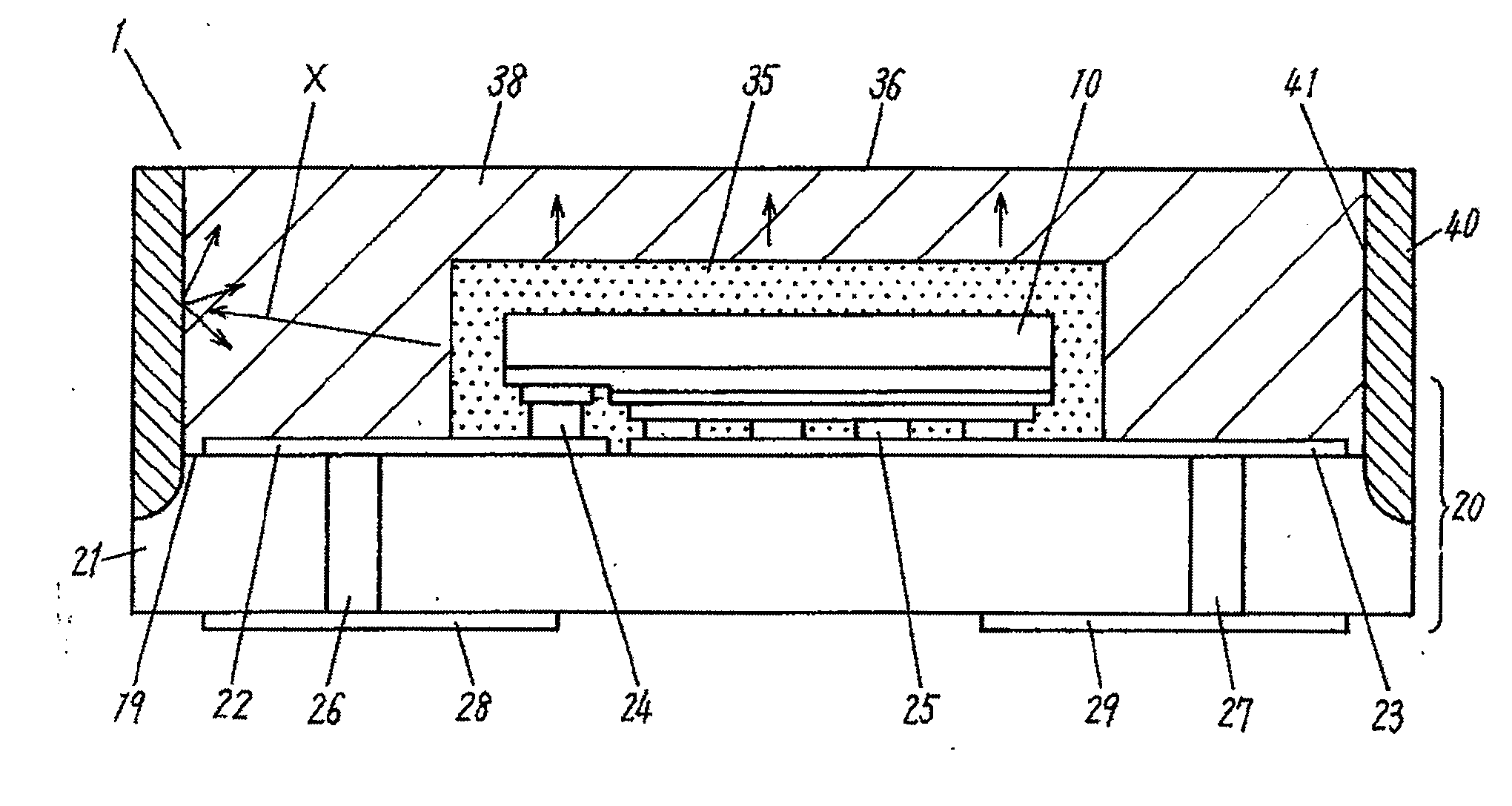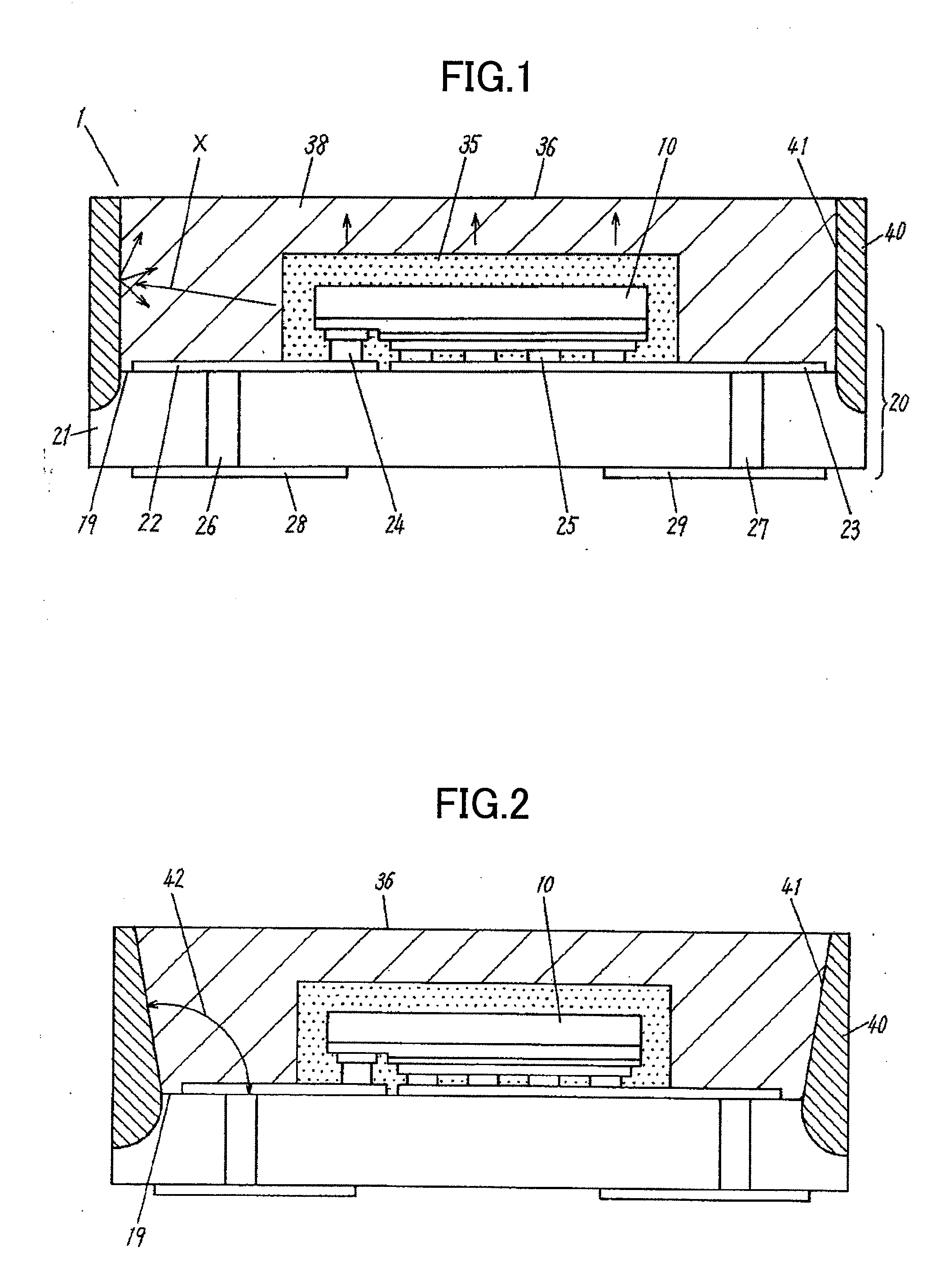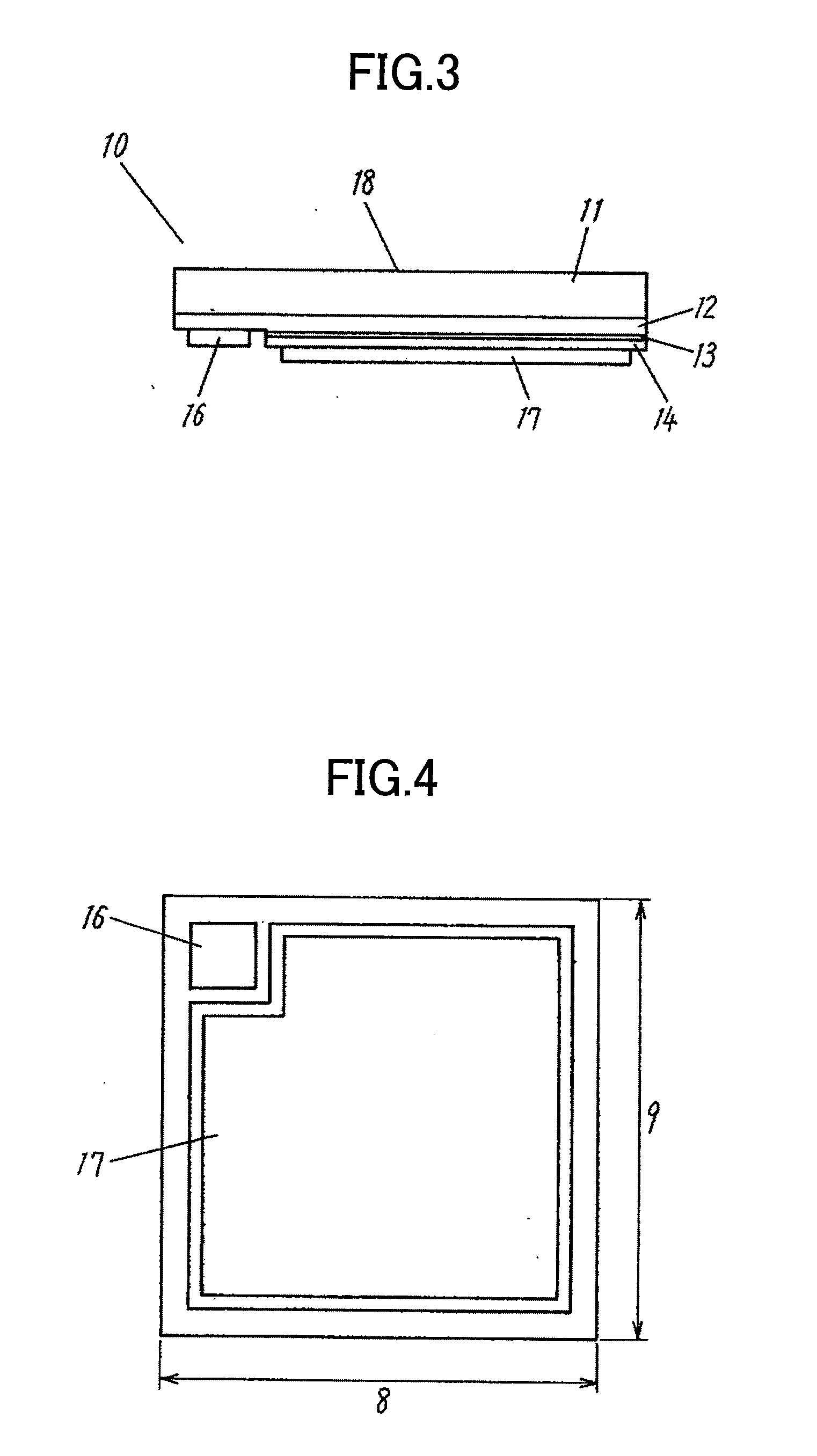Semiconductor light-emitting device and manufacturing method of the same
a technology of semiconductors and light-emitting devices, which is applied in the direction of discharge tubes luminescnet screens, television system scanning details, etc., can solve the problems of waste of light traveling in directions different from radiation directions, and not being suitable for mass production, so as to reduce the amount of light
- Summary
- Abstract
- Description
- Claims
- Application Information
AI Technical Summary
Benefits of technology
Problems solved by technology
Method used
Image
Examples
first embodiment
[0055]FIG. 1 shows a semiconductor light-emitting device 1 of the present invention. The semiconductor light-emitting device 1 is structured so that a semiconductor light-emitting element 10 is fixed to a submount 21.
[0056]Although an example using a flip-chip type semiconductor light-emitting element will be described below, the semiconductor light-emitting device of the present invention does not depend on the type of semiconductor light-emitting element. That is, other types of semiconductor light-emitting elements, such as a face-up type, a one-sided electrode type, and a double-sided electrode type, can be used in the present invention.
[0057]Extended electrodes 22, 23 are formed on the submount 21. The extended electrodes are electrodes for supplying a current to the semiconductor light-emitting element 10. The extended electrode 22 is an n-side extended electrode connected to an n-type layer of the semiconductor light-emitting element, and the extended electrode 23 is a p-side...
second embodiment
[0105]In the first embodiment, as shown in FIGS. 6A-6B, the sealant 38 is formed over the entire surface of the submount substrate 210 having the semiconductor light-emitting elements placed thereon, and then the groove formation process is performed. This method is capable of processing a large number of substrates in a short time. However, since the sealant is formed over the entire surface of the submount substrate 210, the submount substrate 210 can be subjected to increased stress when the sealant is cured. Excessive stress can bend the submount substrate, or can fracture or crack the portion where the sealant is formed. Thus, the sealant may be formed over each semiconductor light-emitting element.
[0106]FIGS. 9A-9B illustrate a part of a manufacturing method of a semiconductor light-emitting device of the present invention. FIG. 9A is a diagram corresponding to FIG. 6A, and FIG. 9B is the same as FIG. 6B. The manufacturing method of the present embodiment can be exactly the sa...
third embodiment
[0109]A manufacturing method capable of reducing the number of steps will be described in the present embodiment.
[0110]Referring to FIGS. 10A-10C, extended electrodes 22, 23 are formed on a submount substrate 210, bumps 24, 25 are also formed, and semiconductor light-emitting elements 10 are placed thereon (FIG. 10A). A phosphor layer 35 is also formed around each semiconductor light-emitting element 10 (FIG. 10B). These steps are the same as those of the first embodiment.
[0111]Then, a sealant 38 is formed over each semiconductor light-emitting element (FIG. 10C). Although a method of forming the sealant 38 is not limited, the use of a printing method or the like is convenient and quick.
[0112]FIGS. 11A-11C show the subsequent steps. After the sealant is formed, a reflective material 43 is applied and formed over the entire surface of the submount substrate 210 (FIG. 11A). No groove formation process is performed in the present embodiment.
[0113]Surfaces, which serve as light-emitting...
PUM
 Login to View More
Login to View More Abstract
Description
Claims
Application Information
 Login to View More
Login to View More - R&D
- Intellectual Property
- Life Sciences
- Materials
- Tech Scout
- Unparalleled Data Quality
- Higher Quality Content
- 60% Fewer Hallucinations
Browse by: Latest US Patents, China's latest patents, Technical Efficacy Thesaurus, Application Domain, Technology Topic, Popular Technical Reports.
© 2025 PatSnap. All rights reserved.Legal|Privacy policy|Modern Slavery Act Transparency Statement|Sitemap|About US| Contact US: help@patsnap.com



